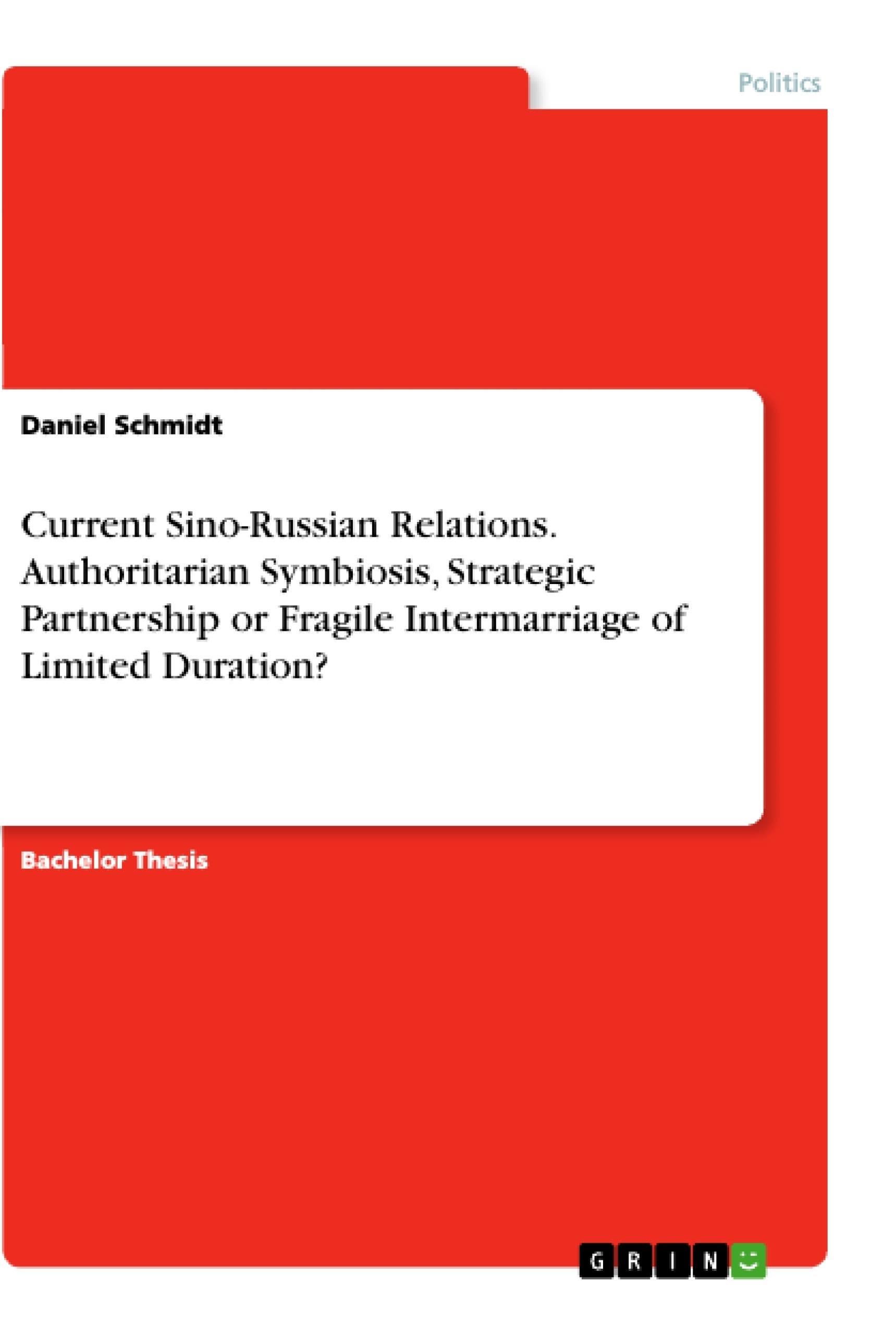In times of global political cataclysms, where the old Washington-led Western liberal order is stumbling – with nationalism and protectionism on the rise and old alliances being challenged – a new kind of super heavy Sino-Russian diplomatic ‘double star system’ is apparently rising in the east since 2001.
Thus, I dedicated this paper to the examination of the quality of contemporary Sino- Russian relations. The hypothesis is, that if Sino-Russian relations live up to the high level that is reiterated by their respective officials and state sponsored media, it needs to be observable that such is thoroughly beneficial for both sides’ core and long-term interests. Therefore, I have come up with a two-tracked approach. First, I will quantitatively analyze (i) their voting behaviors at the UNSC and UNGA; (ii) the development and composition of their bilateral trade levels; and (iii) the two state’s comparative classical indicators of strength – i.e. population size, GDP levels, and defense spending levels.
Second, I will qualitatively analyze how Sino-Russian relations unfold within the context of (i) the military-security focused SCO; (ii) the regional economic agenda of the two concepts of EAEU and SREB; and (iii) the multilateral global order aspirations of the BRICS and their recent process of institutionalization via the NDB and CRA. My research implicates that the relationship has already passed its point closest to equilibrium, with Russia becoming increasingly marginalized since. Hence this thesis argues that, albeit there are areas of matching interests, the indicators point towards a questionable long-term durability of the Sino-Russian relationship.
Inhaltsverzeichnis (Table of Contents)
- 1 Introduction
- 2 Structure
- 3 Historical context of Sino-Russian relations
- 4 Contemporary Statements
- 5 Literature Review
- 5.1 Evaluation
- 6 Methodology
- 7 Quantitative analysis
- 7.1 Sino-Russian UNSC and UNGA voting patterns
- 7.1.1 Sino-Russian voting patterns at the UNSC
- 7.1.2 Sino-Russian voting patterns at the UNGA
- 7.1.3 Conclusion
- 7.2 Trade related bilateral analysis
- 7.2.1 General bilateral trade levels
- 7.2.2 Specific bilateral trade levels
- 7.2.3 Energy trade in particular
- 7.2.4 Arms trade in particular
- 7.2.5 Conclusion
- 7.3 Benchmarks of Russia and China's asymmetric developments
- 7.3.1 Gross domestic product
- 7.3.2 Population
- 7.3.3 Defense spending
- 7.3.4 Defense spending as percentage of GDP
- 7.3.5 Conclusion
- 7.1 Sino-Russian UNSC and UNGA voting patterns
- 8 Qualitative analysis
- 8.1 China and Russia within the Shanghai Cooperation Organization
- 8.1.1 The Shanghai Cooperation Organization's foundation
- 8.1.2 Ideological core
- 8.1.3 The drivers of regional integration
- 8.1.4 The institutional setup
- 8.1.5 Russia and China's agenda within the SCO
- 8.1.6 Conclusion
- 8.2 The Eurasian Economic Union and the Silk Road Economic Belt
- 8.2.1 The concepts of SREB and the EAEU
- 8.2.2 Silk Road Economic Belt
- 8.2.3 Fields of cooperation
- 8.2.4 Conclusion
- 8.3 BRICS and the New Development Bank within the Sino-Russian axis
- 8.3.1 The concept of BRICS
- 8.3.2 The design of the BRICS New Development Bank and the Contingent Reserve Arrangement
- 8.3.3 Implications for the Sino-Russian partnership
- 8.3.4 Conclusion
- 8.1 China and Russia within the Shanghai Cooperation Organization
- 9 Final assessment and conclusion
Zielsetzung und Themenschwerpunkte (Objectives and Key Themes)
This paper aims to analyze the nature and quality of contemporary Sino-Russian relations, examining whether the high levels of cooperation proclaimed by officials and state media truly benefit both countries' core and long-term interests. The study focuses on a dual approach, analyzing quantitative indicators such as UN voting patterns, bilateral trade levels, and power indicators, alongside qualitative insights into the Sino-Russian relationship within key regional and global organizations.
- The evolving nature of Sino-Russian relations in the context of a changing global order.
- The extent to which mutual interests drive Sino-Russian cooperation.
- The role of quantitative indicators in gauging the strength and durability of the relationship.
- The impact of regional organizations like the SCO and EAEU on Sino-Russian relations.
- The implications of global institutions like the BRICS and NDB for Sino-Russian partnerships.
Zusammenfassung der Kapitel (Chapter Summaries)
- Chapter 1 introduces the topic of Sino-Russian relations, highlighting the changing global landscape and the rise of a "double star system" in the east.
- Chapter 3 delves into the historical context of Sino-Russian relations, providing a foundation for understanding the current dynamics.
- Chapter 4 examines contemporary statements made by officials and state media regarding Sino-Russian relations.
- Chapter 5 reviews relevant literature, critically evaluating existing scholarship on the subject.
- Chapter 6 outlines the methodology employed in the research, detailing both quantitative and qualitative analytical approaches.
- Chapter 7 presents a quantitative analysis of Sino-Russian voting patterns at the UN, bilateral trade levels, and power indicators, providing empirical data on the relationship.
- Chapter 8 conducts a qualitative analysis of Sino-Russian interactions within key organizations, including the SCO, EAEU, and BRICS, exploring the dynamics of cooperation and partnership.
Schlüsselwörter (Keywords)
This study focuses on the complex dynamics of Sino-Russian relations, exploring key themes such as bilateral trade, voting patterns at international organizations, power indicators, and the role of regional and global institutions in shaping the relationship. Key terms include China, Russia, Sino-Russian relations, United Nations voting, bilateral trade, power indicators, asymmetric relationship, SCO, EAEU, BRI, BRICS, NDB, and international order.
- Quote paper
- Daniel Schmidt (Author), 2019, Current Sino-Russian Relations. Authoritarian Symbiosis, Strategic Partnership or Fragile Intermarriage of Limited Duration?, Munich, GRIN Verlag, https://www.grin.com/document/1184845



